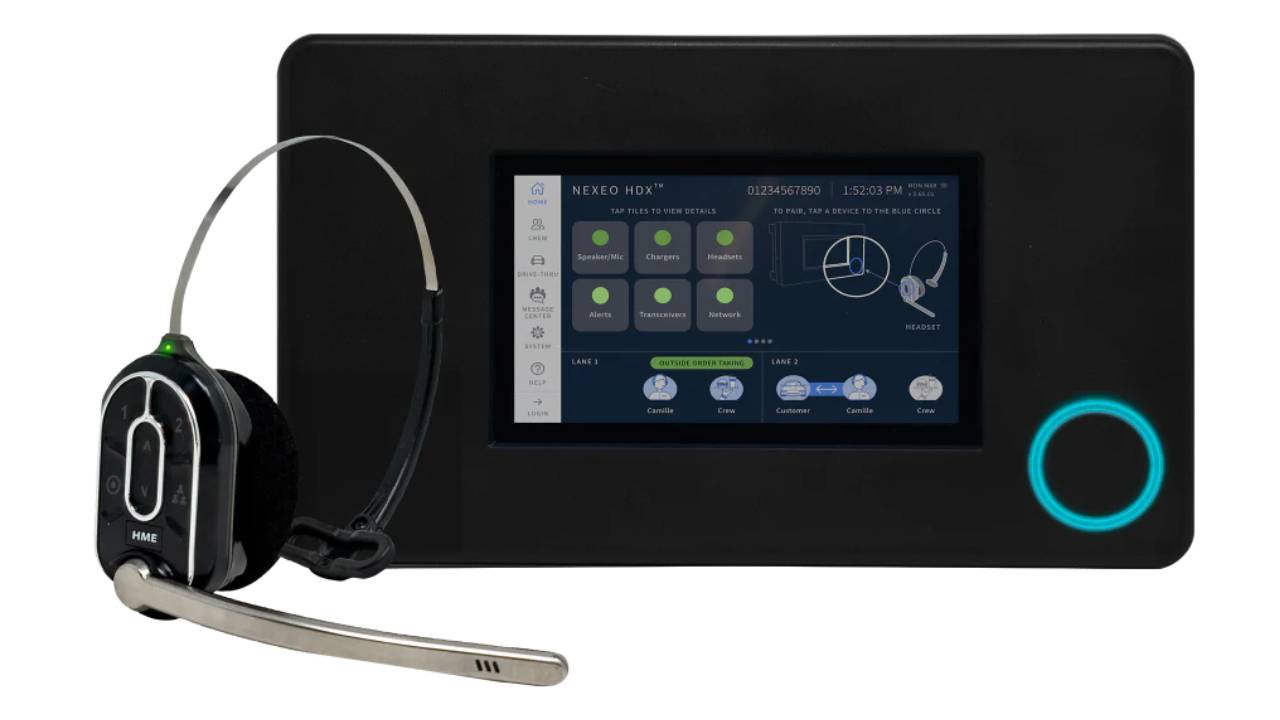So, the time has come to either upgrade from an existing intercom system or you’re opening your drive-thru for the first time. One of the most important questions you’re going to ask yourself is, “how many headsets do I need?” While it may seem obvious to count the number of employees you will have taking orders at any given time, it isn’t that simple. There are a few factors that should be considered to ensure you’re getting enough while at the same time not overdoing it.
Staff By Time of Day
99% of restaurants have peak and off-peak times of day as it pertains to their customer influx. If you are just starting out, you’ll have to work of industry data versus historical data of your own, which isn’t ideal but not a huge hurdle to overcome either. While the amount of customers that visit your restaurant will come in waves, your staffing should match them as best as you can. Start by analyzing that. Some locations have dual lanes that will only use both lanes during peak hours. Are you one of them? Do you have a single lane, that when it gets busy you send out “line busters?” Consider that. Do you have baristas or line cooks wear headsets during these hours to capitalize on every second of preparation? Factor that in. If your answer is “yes” to any of these questions, you’re probably looking at a need of 4-6 headsets.
Communicating Internally
While taking orders is often thought of as the only purpose of a drive-thru headset system, internal communication is one of the benefits of modernized options. One manager can communicate and/or program messages to any number of employees to perform certain tasks or voice reminders. Communication to managing customer flow, to check inventory, to do a garbage or bathroom sweep and more can be easily sent. In addition, many of these systems have a separate channel all together so you can have full blown conversations while you work in opposite parts of the restaurant if you’d like.
Integrating Your Phone System
There are few systems available, like the HME Nexeo, that allow you to integrate your headset system with your regular phone line. The benefit of this is obvious as you do not have to remove your headset to answer calls and it adds to your employee’s hand-free ability to perform multiple tasks at once. Before opting for a system with this capability, you should consider how frequently you’re getting inbound calls as the world continues towards more contactless ordering approaches (online, via app, etc.). In addition, you should check with your phone company and prospective headset company to confirm the compatibility.
Floaters & Training
Any new employee will have to be trained on how to use a headset system. There are specific functions like “whisper” that make it much easier. Not only can a manager tell someone what to do or say during the order taking process, they can do it while not being heard by the customer, only the employee. You should also account for shift leads or assigned floaters that can hop in on a whim to make sure there is no operational down time. For instance, drive-thru employees take breaks, they’ll need to use the restroom, personal matters may pop up, etc. Rather than jostling headsets, keep an extra couple on hand for easy access.
Battery Life & Upkeep
A brand-new headset / battery will last almost an entire shift. However, like all batteries this lessens over time. While your first approach should be to add more batteries at a fraction of the cost, you may want to consider a “backup” for when nature takes its course, and a headset either needs to be advance exchanged or repaired before it would ultimately have to be replaced. If your location is open for long hours, this becomes more critical to eliminate downtime.
Drive-Thru Volume
Finally, and probably most importantly, you must consider your volume. With QSRs seeing an average of 60-70% of their revenue passing through the drive-thru the more important analysis is “60-70%” of what? For example, this percentage at any given Starbucks is likely to be a lot more than a random Mom & Pop burger joint that is just starting out. However, being prepared with defined roles and with the equipment to support them will go a long way in handling whatever volume comes your way.
Summary
When asked “how many headsets do you need?” We are often met with something to the extent of “I don’t know, you tell me.” Here is a rule of thumb. Consider what your operational vision is going to look like. How many people will be wearing a headset at any given time, performing any given role. Take that number and add one headset. And here’s the thing, these systems are scalable! If you order two and outgrow that, you can order more. Conversely, if you order too many, and you have a good year of experience to back that up, there is always a resell market for unused headsets as well. This is a long way of saying, you can’t go (totally) wrong either way.
Do you need help making these determinations for your business? Give us a call today at 888-235-2579, email us at info@origindisplays.com or contact us here to speak with a solutions specialist.
